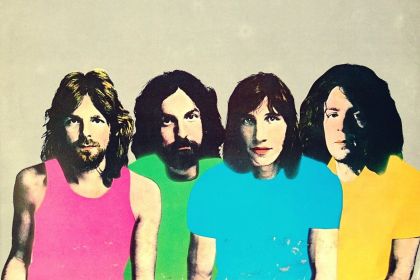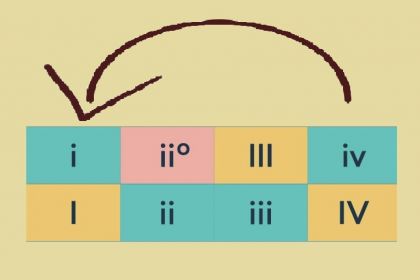Music Theory
Mixolydian mode in Pink Floyd songs

Pink Floyd's Animals LP cover
The Western music theory as we know it traditionally uses three major diatonic scales. Each scale's harmonic structure gives songwriters the tools to build compositions within a very specific emotional tonality. The Ionian, Lydian, and Mixolydian modes—formed through the respective musical scales—are the most natural way to organize the major-mode harmony by arranging the song melody with its chord accompaniment.
The best way to implement the interaction of the three musical functions—the tonic, subdominant, and dominant—is through the Ionian mode, which solidifies it as the primary choice in classical and pop music where it often simply referred to as the major mode. The Lydian and Mixolydian major modes have modal status and appear relatively rarely in classical music, though pop songwriters use them more extensively.
Of the four diatonic modal modes (Dorian, Phrygian, Lydian, and Mixolydian), it's Mixolydian that is most commonly found in rock music as it expands the usage of bright major musical riffs. Our harmonic analysis regarding the usage of Mixolydian chord progressions in the musical output of The Beatles shows 14 songs in total, 12 for Led Zeppelin, 4 songs for The Doors, and only 2 for Pink Floyd. The chord structure of this major modal mode is discussed in more detail in the article on 7 songs featuring Mixolydian mode.
The first example of the Mixolydian harmony in a Pink Floyd track is seen in A Pillow Of Winds. In the harmonic analysis of the intro chord chains, the scale degrees (denoted with Roman numerals) show the following progression in the key of E major: E–F♯m–E or I–ii–I.
There is simply an alternation of two chords rooted in the first and second degrees of the Ionian scale, which are often referred to as the tonic and supertonic chords, respectively. Given that the structure of these two chords is identical in the Ionian and Mixolydian modes, this progression can also be attributed to the Mixolydian mode.
The opening verse also has a Mixolydian progression with the Bm minor dominant chord rooted in the fifth scale degree: F♯m–E–Bm–E or ii–I–v–I.
In the middle part of the song, there is a sudden modulation into E Aeolian, starting with the lyrics "when night comes down you lock the door," and the two following stanzas feature progressions involving the three primary chords in the key of E minor: Em, Am, Bm or i, iv, v.
The Mixolydian mode reappears in the last verse with the lyrics "and deep beneath the ground the early morning sounds and I go down" which echoes the progression from the first stanza: F♯m–E–Bm–E or ii–I–v–I.
Note that the v–I musical turnaround is referred to as the authentic cadence and plays a crucial role in completing the musical sections. The authentic cadence of the Mixolydian mode does not grant the listener a clear sense of resolution as the dominant triad here is a minor chord. This could explain the comparatively rare usage of this mode.
Listen to A Pillow Of Winds by Pink Floyd:
A more typical example of the Mixolydian progression is shown in Pink Floyd's The Hero's Return. All sections of the track, except for the coda, are accompanied by the alternation of only two major chords—D and C, rooted in the first and seventh degrees of the D Mixolydian scale.
A similar two-chord formula can be found in the following rock songs, the first two of which are based entirely on a musical riff formed by tonic and subtonic chords:
- Grateful Dead's Fire on the Mountain;
- The Doors' L.A. Woman;
- Grateful Dead's Dark Star;
- The Beatles' I Needed Someone;
- The Doors' The End.
In The Hero's Return coda, the persistent alternation of G subdominant and C subtonic chords results in a minor ending with the Em chord, leading the song to a rather intriguing finale that could be seen as a modulation into E Aeolian: D–G–C–G–C–G–C–Em or I–IV–VII–IV–VII–IV–VII–ii.
Listen to The Hero's Return by Pink Floyd:
Explore how Pink Floyd uses other musical modes:
Discover more songs composed in Mixolydian major mode and check out their harmonic analysis in the following articles:
- 7 songs featuring Mixolydian mode
- Mixolydian mode in The Doors songs
- Scarlet Begonias: three major Mixolydian chords in a Grateful Dead's ballad
- Carpet Crawlers: two major modes of Genesis' last studio recording
- The Bells of Rhymney: two major modal modes of famous protest song
- Seven Seas of Rhye: song of imaginary land brought to life by Ionian and Mixolydian modes
- Longfellow Serenade and the fireside poet that kindled Neil Diamond's song



